


Opportunities And Challenges For A Changing World
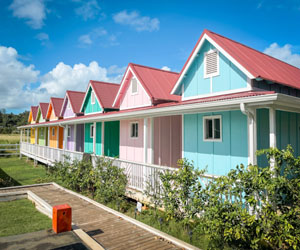
Population growth is a complex and pressing issue that has profound implications for the planet, societies, and individuals. As of my last knowledge update in January 2022, the global population was over 7.7 billion, and it continues to increase. Understanding the dynamics of population growth is essential for addressing a wide range of social, economic, and environmental challenges.
The world's population has been steadily increasing for centuries, driven by a combination of factors, including increased life expectancy, reduced mortality rates, and, in some regions, high fertility rates. While the global population growth rate has been slowing down, it remains a significant concern due to its implications on resources, infrastructure, and quality of life.
One of the challenges associated with rapid population growth is the strain it places on resources. As the number of people on the planet increases, so does the demand for essentials like food, water, energy, and housing. This growing demand can lead to resource scarcity, environmental degradation, and increased competition for limited resources.
Moreover, population growth often has economic implications. While a growing population can contribute to a larger labor force, which can be a source of economic growth, it can also lead to unemployment and underemployment if job opportunities do not keep pace with the increase in the labor force. Balancing economic growth with the needs of a growing population is a delicate challenge for governments and policymakers.
Urbanization is closely linked to population growth. As more people move to cities in search of better opportunities, urban areas experience increased pressure on housing, transportation, and social services. Rapid and unplanned urbanization can lead to inadequate infrastructure, housing shortages, and increased pollution, posing health and environmental risks.
Another crucial aspect of population growth is its impact on the environment. As the global population expands, so does the consumption of natural resources, leading to deforestation, pollution, and the overexploitation of ecosystems. Addressing issues like climate change and biodiversity loss is closely tied to managing and mitigating the environmental consequences of population growth.
While the challenges of population growth are evident, there are also opportunities that come with a larger, more diverse population. A growing population can fuel economic growth, innovation, and cultural exchange. It can provide the labor force needed for development and contribute to a more vibrant and dynamic society.
Managing population growth in a sustainable manner involves addressing its various dimensions. Education and access to family planning are essential to empowering individuals and communities to make informed decisions about family size. Encouraging responsible consumption and sustainable living can help alleviate the environmental impact of a larger population.
Population growth is a multifaceted issue with far-reaching consequences. While it presents challenges related to resource scarcity, economic pressures, and environmental degradation, it also offers opportunities for growth, development, and cultural exchange. To address the challenges posed by population growth, societies and governments must adopt policies that promote sustainability, equality, and responsible resource management. Only through collective effort can we find a balance between population growth and the well-being of our planet and its inhabitants.
A Cleaner Home And Healthier Planet
 1. Switch To Eco-Friendly Cleaning Products
1. Switch To Eco-Friendly Cleaning Products
One of the simplest and most effective ways to embrace green cleaning is to replace traditional cleaning products with eco-friendly alternatives. Look for cleaning products that have been certified as environmentally safe, such as those bearing the "EcoLogo" or "Green Seal" labels. These certifications ensure that the products meet stringent environmental and health standards.
2. Create Your Homemade Cleaning Solutions
Another excellent recommendation is to make your own green cleaning solutions using readily available household ingredients. Common items like white vinegar, baking soda, lemon juice, and essential oils can effectively clean a wide range of surfaces and provide a fresh, natural scent. You can mix these ingredients to create all-purpose cleaners, window cleaners, and even disinfectants.
3. Prioritize Reusable Cleaning Tools
Invest in high-quality, reusable cleaning tools such as microfiber cloths, mop heads, scrub brushes, and dusters. These tools are not only efficient at capturing dirt and dust, but they also eliminate the need for disposable cleaning supplies. By opting for reusable tools, you can significantly reduce waste and contribute to a cleaner planet.
4. Embrace Energy-Efficient Cleaning Appliances
When it's time to replace your cleaning appliances, consider investing in energy-efficient models. Energy-efficient vacuum cleaners, steam cleaners, and other cleaning appliances not only save you money on energy bills but also reduce your overall energy consumption, which is better for the environment.
Paving The Way To A Sustainable Future
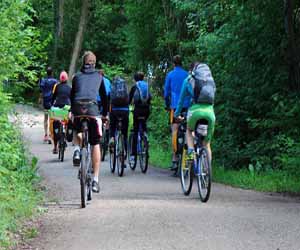 1. Electric Vehicles (EVs): Electric vehicles have gained significant popularity as a greener alternative to traditional gasoline and diesel-powered cars. EVs run on electricity stored in rechargeable batteries, producing zero tailpipe emissions. The adoption of electric cars is on the rise, thanks to advancements in battery technology, extended driving ranges, and the expansion of charging infrastructure. EVs significantly reduce carbon emissions, air pollution, and dependence on fossil fuels.
1. Electric Vehicles (EVs): Electric vehicles have gained significant popularity as a greener alternative to traditional gasoline and diesel-powered cars. EVs run on electricity stored in rechargeable batteries, producing zero tailpipe emissions. The adoption of electric cars is on the rise, thanks to advancements in battery technology, extended driving ranges, and the expansion of charging infrastructure. EVs significantly reduce carbon emissions, air pollution, and dependence on fossil fuels.
2. Hybrid Vehicles: Hybrid vehicles combine traditional internal combustion engines with electric propulsion systems. These vehicles can operate on electric power at low speeds and switch to the internal combustion engine at higher speeds or when additional power is needed. Hybrid technology improves fuel efficiency and reduces emissions, making it an effective transition solution for those not yet ready to fully commit to electric vehicles.
3. Public Transportation: Efficient and eco-friendly public transportation systems, such as buses and trains, play a vital role in reducing the number of private vehicles on the road. Modern public transportation options often include electric or hybrid buses, which produce fewer emissions and offer a more sustainable means of moving people within urban areas.
4. Bicycles And Electric Bikes: Cycling and electric biking are eco-friendly, healthy, and efficient modes of transportation. These options produce zero emissions and promote physical activity, reducing the overall carbon footprint associated with commuting. Many cities worldwide are investing in cycling infrastructure to encourage this sustainable means of transportation.
A Glimpse Into Tomorrow's Living Spaces
 A Symphony Of Automation And Connectivity
A Symphony Of Automation And Connectivity
The home of the future is a symphony of automation and connectivity. It's a place where technology seamlessly integrates into every aspect of daily life. From the moment you wake up, your home is ready to assist you. Imagine a home where the lights gradually brighten to mimic the natural sunrise, and your coffee maker starts brewing your morning cup as your alarm goes off. This level of automation is now possible thanks to smart home technologies.
Smart Home Upgrades
One of the key elements of the home of the future is the plethora of smart home upgrades available today. These upgrades have revolutionized the way we interact with our living spaces. From intelligent thermostats that adapt to our preferences to security systems that keep a vigilant eye on our property, these technologies hold the potential to elevate our homes into spaces of the future.
Personalized Living
The home of the future is all about personalization. With smart technologies, your home can learn your habits and adapt to your preferences. For example, smart thermostats can create a tailored heating and cooling schedule based on your daily routines. This not only enhances your comfort but also leads to energy savings, making your home more efficient and eco-friendly.
Security And Peace Of Mind
Home security is a top priority for homeowners, and the home of the future takes it to the next level. Smart security systems provide real-time monitoring, allowing you to keep a watchful eye on your property, whether you're at home or away.
Exploring The Benefits Of Solar Energy
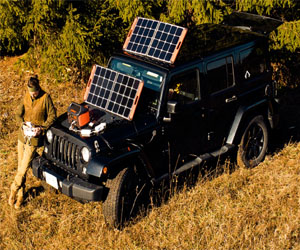 2. Reduced Electricity Bills
2. Reduced Electricity Bills
Solar panels allow homeowners and businesses to generate their electricity, which can lead to substantial cost savings on their electricity bills. By producing your electricity, you can significantly reduce or even eliminate your reliance on traditional utility providers.
3. Energy Independence
With solar panels on your roof or property, you gain a degree of energy independence. You are less reliant on the grid, which can be especially advantageous during power outages. Solar power systems, combined with energy storage solutions like batteries, can provide a consistent supply of electricity even when the sun isn't shining.
4. Increased Property Value
Homes and commercial properties equipped with solar panels often see an increase in their market value. Solar panels are viewed as attractive assets, and many potential buyers are willing to pay a premium for a property with solar installations.
5. Government Incentives
Many governments worldwide offer incentives, tax credits, and rebates to encourage the adoption of solar energy. These financial perks can make solar installations more accessible and affordable for homeowners and businesses.
6. Low Operating Costs
Once installed, solar panels have minimal operating and maintenance costs. Regular cleaning and occasional inspections are usually all that's needed to keep the system running efficiently. This low-maintenance feature makes solar energy a cost-effective long-term investment.

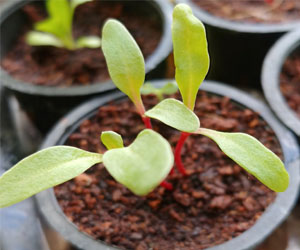



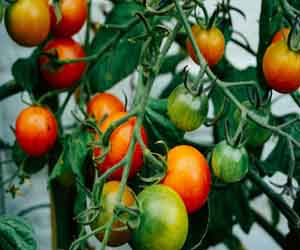
The Art Of Wilderness Living
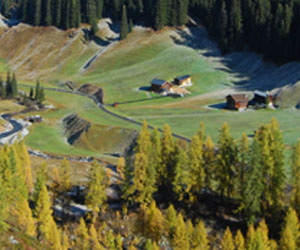 Wilderness living is all about embracing the raw and unspoiled natural world. It involves choosing to reside in remote, unpopulated areas, often far from the amenities and comforts of modern civilization. Those who opt for this lifestyle build their homes, forage for food, and harness the elements to survive. It's a challenging yet rewarding way of life that allows individuals to experience a profound sense of freedom, self-sufficiency, and harmony with nature.
Wilderness living is all about embracing the raw and unspoiled natural world. It involves choosing to reside in remote, unpopulated areas, often far from the amenities and comforts of modern civilization. Those who opt for this lifestyle build their homes, forage for food, and harness the elements to survive. It's a challenging yet rewarding way of life that allows individuals to experience a profound sense of freedom, self-sufficiency, and harmony with nature.
One of the fundamental aspects of wilderness living is self-reliance. Those who live in the wild learn to depend on their resourcefulness and creativity to meet their basic needs. Whether it's building shelter from natural materials, hunting, fishing, or foraging for food, these individuals rely on their ingenuity and skills to thrive in a challenging environment.
Living in the wilderness requires adaptability, as nature is unpredictable. The ability to respond to changing conditions, from weather patterns to the availability of food sources, is crucial for survival. Wilderness dwellers must be in tune with the rhythms of the natural world, adapting and learning as they go.
The off-grid lifestyle also emphasizes sustainability. Wilderness living encourages the minimal environmental impact by relying on renewable resources, generating one's own energy, and adopting eco-friendly practices. Sustainability is not just a choice but a necessity when living far from the conveniences of the modern world.
Community plays a significant role in wilderness living. While it may seem like a solitary existence, many individuals who choose this lifestyle join like-minded communities, which provide support, shared knowledge, and a sense of belonging. These communities often come together to share resources, build collective shelters, and ensure their collective well-being.
The Power Of Gardening Communities
 2. Problem Solving: When faced with a gardening challenge, whether it's a mysterious pest infestation or a stubborn weed problem, being part of a gardening community means you have a network of fellow gardeners to turn to for solutions. Together, members can brainstorm ideas and offer practical advice.
2. Problem Solving: When faced with a gardening challenge, whether it's a mysterious pest infestation or a stubborn weed problem, being part of a gardening community means you have a network of fellow gardeners to turn to for solutions. Together, members can brainstorm ideas and offer practical advice.
3. Seed And Plant Swaps: Gardening communities frequently organize seed and plant swaps. These events are excellent opportunities to acquire new and interesting plant varieties and share your own surplus plants with fellow gardeners. Such swaps promote diversity and provide access to rare and heirloom plants.
4. Collaboration: In some gardening communities, members collaborate on group projects or communal gardens. These shared spaces allow for the cultivation of larger and more diverse gardens than what individual gardeners might achieve alone. Collaborative efforts can result in flourishing, bountiful gardens that benefit everyone involved.
5. Social Interaction: Gardening is a solitary activity for many, but being part of a gardening community can alleviate the isolation. Whether you're participating in a local club's meetings or engaging in online discussions, these interactions offer the chance to connect with like-minded individuals who share your passion for plants and the outdoors.
6. Garden Tours And Events: Gardening communities often organize garden tours and events where members can visit one another's gardens, exchange ideas, and celebrate each other's successes. These events can be a source of inspiration and an opportunity to appreciate the beauty of different gardening styles.